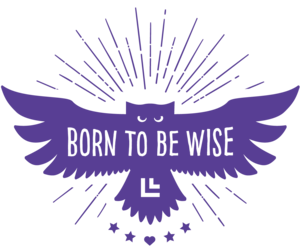Discover 10 Learning and Development (L&D) trends. All indicating that learning organizations have a competitive stance.
1. Opportunities for learning and development are critical for employee retention
Employees need to feel connected to their work. The Great Resignation in 2021 and the Quiet Quitting movement in 2022 showed the negative effects of poor employee engagement.
Studies show a strong link between employee retention and opportunities for learning and development. Employees are as likely to leave their jobs for greater development opportunities as for higher pay. Today, only 1 in 4 employees are confident in their career prospects at their company. The remaining 3 out of 4 workers hunt for opportunities outside the organization. 44% of HR leaders think their organizations do not have compelling enough career paths. Roughly the same amount (47%) say that employee experience is a priority in 2023 [2].
Learning organizations retain talent better. Connecting learning culture to business strategy, employees are given a clear career path. Engagement levels rise and employees are likely to stay longer with the company [1].
Download playbook: How to build a learning organization with Learnster
2. Upskilling promotes organizational agility and resilience
If keeping up with innovation was important pre-pandemic, it is an absolute must in 2023. The pandemic showed just how agile businesses need to be to meet future challenges. Companies that adapted and changed the way they operated were the ones that came out stronger. In other words, businesses need to be storm-proof.
Uncertain or challenging times require companies to stay agile and innovative. Downsizing and budget cuts are not an excuse to under-deliver. To survive, companies would work hard to attract the right people with the right skill set. However, competing over talent is neither scalable, nor cost-effective. Instead, upskilling is one of the most efficient ways of future-proofing your business.
Learning organizations are more agile. They identify and nurture the skills needed for both organizational and individual growth. Employees receive personalized and role-specific learning opportunities. Nurturing skills for emerging roles, they become better equipped to handle both current and future challenges. L&D strategies address both current and future learning needs help the organization face the challenges of an evolving workplace [1].
3. Scaling internal knowledge becomes vital when relying on internal skills
Hiring freezes and budget cuts make organizations rely on internal skills to a greater extent. This coincides with accelerating change in the workplace and the need for adaptation. It is no surprise that 2023 calls for upskilling.
It has never been more important to crowdsource learning resources and scale internal knowledge. Encouraging employees to share knowledge and learn from each other is a hotbed for organizational upskilling. It also makes the organization less independent on individual employees, who may come and go.
Learning organizations have the right attitudes to knowledge sharing. Learning from each other and succeeding as a team are in their DNA. In addition, they have an enabling infrastructure and tools that enable the entire organization to contribute to training. Internal subject matter experts are encouraged to produce, or take entire ownership of, learning materials.
4. Understanding the ROI of learning initiatives becomes crucial
With tighter budgets, understanding the ROI (return on investment) of learning and development becomes crucial. Before investing in new initiatives and technology, or removing existing ones, companies need to get the full picture.
To make informed decisions, factor in learning's impact on the following KPIs:
- productivity increase
- production output
- employee engagement
- employee retention
- eNPS
- time to contribution
- time to proficiency
- knowledge and skills retention
- rebooting and transitioning time (following change or disruption)
Learning organizations recognize the direct and indirect values of learning initiatives and technology. Understanding L&D's impact on competitiveness, they can better distinguish between business value and unnecessary costs.
5. The recession sheds light on new implications of growth
Growing your business in a recession can seem like an unthinkable thing. Budget cuts, downsizing, and hiring freezes might indicate your business is hibernating. In reality, however, it may be the very opposite.
2023 puts the growth spotlight on internal skills. To avoid stagnation and to keep employee engagement high, learning can help keep momentum. Growing internal skills, organizations are more likely to keep valuable talent and boost resilience. It helps them adapt to current circumstances and boost readiness for better times ahead.
Embracing disruption as an opportunity generates long-term strategic benefits. Organizations that continued prioritizing innovation through the 2009 financial crisis outperformed the market average by more than 30% [1].
6. The right delivery helps employees get the most out of learning
Learning is not a one-size-fits-all. The rise of digital learning fatigue showed the negative effect of using a stereotype delivery of learning material. Companies that meet their learning goals are those that use a varied strategy for learning delivery. This involves specialized approaches for learner groups and their specific needs.
Using a variety of formats for knowledge sharing and combining learning environments create better engagement opportunities. Through cohort-based learning, employees can develop leadership skills in an efficient way. Self-paced, on-demand learning allows employees to take ownership of their own skills development. They fit training into their schedules as they are able [1]. To facilitate learning and the point of need, micro-learning and resource libraries are valuable assets.
Learning organizations have a diverse and enabling learning infrastructure. Offering a wide variety of learning resources, employees can choose formats that suit their needs and preferences.
7. The hybrid workplace forces companies to reinvent their academies
Learning needs to happen where work happens. In 2023, this could be practically anywhere. As organizations continue the hybrid model of work, they need to rethink their physical corporate academies and classroom training [3].
Executive Networks research, conducted with 515 global L&D leaders in partnership with NovoEd, found that nearly 6 out of 10 believe the growth of hybrid working and learning will reinvent the traditional brick-and-mortar corporate academy. Hybrid learning is no longer a temporary accommodation. This makes companies question the role and purpose of physical training. Future academies are likely to be omni-channel [3].
Organizations prioritizing learning and development are naturally inclined to optimize the accessibility of learning resources. This includes availability through both offline and online sources. Formats range from classroom training and discussion forums to online academies and resources collections.
8. Despite the accelerating digitalization: Human skills are high in demand
By 2030, one billion jobs will be transformed by technology. Technical skills are therefore high in demand in tomorrow's workplace. Still, the top 5 sought-after skills today are human. According to Pearson's Skills Outlook report on “power skills”, these are:
- Communication
- Customer service
- Leadership
- Attention to detail
- Collaboration
Looking ahead to 2026, the same report identified 3 additional human skills:
- Personal learning & mastery
- Achievement focus
- Cultural and social Intelligence [3]
Organizations with a learning culture and a growth mindset identify skills that really matter in an evolving work environment. They are therefore likely well underway developing prevalent skills, like the ones above.
9. Learning technology an important part of organizations' tech stack
As L&D plays a central role in business strategy, so does learning technology across organizations' tech stack. Companies integrate their LMSs and e-learning platforms with HR platforms and other systems. These integrations synchronize the systems and share data to optimize the performance of each tool. The purpose is to remove time-consuming admin, streamline processes and make learning more personalized.
10. AI on the horizon in learning technology
Like most business functions, the use of AI (artificial intelligence) is on the rise in learning and development. The most recent (and unknown to no one) being ChatGPT. Released in November 2022, the viral chat bot generates instant human-like text based on a given prompt. Implications for L&D include content creation. The AI-generated text could be used as first drafts of content, which an experienced L&D professional would then refine. Generating short and snappy answers in the blink of an eye, the technology serves well for learning at the point of need. However, it is important to note that ChatGPT and its effectiveness depend on how it is being used in companies' existing training programs.
The use of AI can also power the learning experience, making it more interactive and engaging. Simulations and virtual reality help practice scenarios in a (close to) real-life setting. Adding gamification to your course offering helps keep learners motivated.
Making learning personalized and relevant, companies use AI to identify and address knowledge gaps. Modern LMSs pinpoint individual learning needs and provide tailored course recommendations based on them.
References
[1] Udemy Business, 2023 Workplace Learning Trends Report

%20trends%202023-1.jpg)


